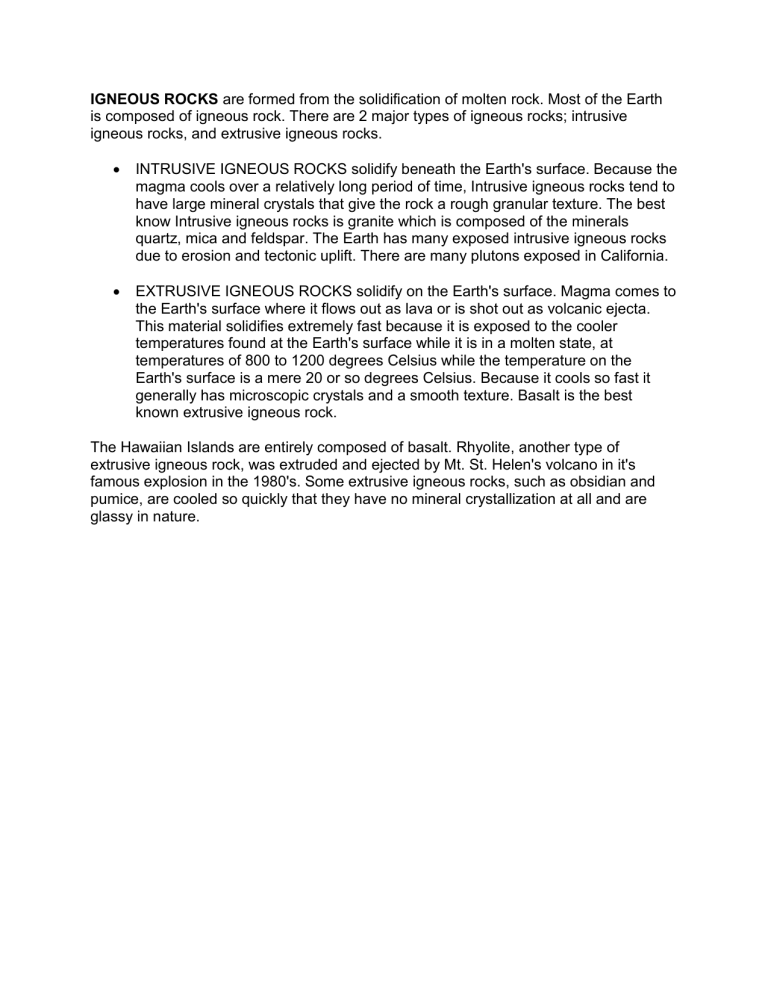IGNEOUS ROCKS are formed from the solidification of molten rock

IGNEOUS ROCKS are formed from the solidification of molten rock. Most of the Earth is composed of igneous rock. There are 2 major types of igneous rocks; intrusive igneous rocks, and extrusive igneous rocks.
INTRUSIVE IGNEOUS ROCKS solidify beneath the Earth's surface. Because the magma cools over a relatively long period of time, Intrusive igneous rocks tend to have large mineral crystals that give the rock a rough granular texture. The best know Intrusive igneous rocks is granite which is composed of the minerals quartz, mica and feldspar. The Earth has many exposed intrusive igneous rocks due to erosion and tectonic uplift. There are many plutons exposed in California.
EXTRUSIVE IGNEOUS ROCKS solidify on the Earth's surface. Magma comes to the Earth's surface where it flows out as lava or is shot out as volcanic ejecta.
This material solidifies extremely fast because it is exposed to the cooler temperatures found at the Earth's surface while it is in a molten state, at temperatures of 800 to 1200 degrees Celsius while the temperature on the
Earth's surface is a mere 20 or so degrees Celsius. Because it cools so fast it generally has microscopic crystals and a smooth texture. Basalt is the best known extrusive igneous rock.
The Hawaiian Islands are entirely composed of basalt. Rhyolite, another type of extrusive igneous rock, was extruded and ejected by Mt. St. Helen's volcano in it's famous explosion in the 1980's. Some extrusive igneous rocks, such as obsidian and pumice, are cooled so quickly that they have no mineral crystallization at all and are glassy in nature.






